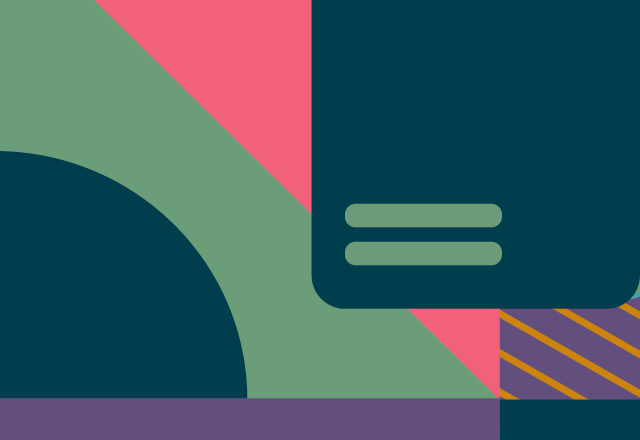Onboarding is critical to success
Onboarding is a critical process for organizations, as it sets the tone for a new hire's experience and can impact their long-term success at your organization. When done correctly, your organization can flourish, with every new hire being more productive and generating value. But if done poorly, you can inadvertently hurt your bottom line while negatively impacting your culture. If you're here, chances are you had a chance to check out the first blog in this two-part series covering eight signs your onboarding process isn't working, where we touched on onboarding’s contribution to engineering effectiveness. If not, we encourage you to check it out before moving forward with this particular blog.
So, based on the previous blog, your onboarding isn't entirely cutting it. But that's ok, because here we'll discuss seven ways organizations can create a more effective onboarding process, which can help developer productivity and developer experience overall. While not exhaustive, these seven ways to improve your onboarding experience can make a significant impact and set you down the right path.
Ways to improve your onboarding experience
1.) Create a path to effectiveness
In an article about maximizing developer effectiveness, focusing on outcomes rather than outputs and how engaged employees can create the most value for your business and customer. Empowered employees aren't simply coding a requirement, designing to a spec or developing features based on requests from a sales team. Instead, they're thinking creatively about the problem space, coming up with cost-efficient, scalable and innovative solutions. Here are just a few examples of outcomes you can integrate into the onboarding process:
A clear view of the company mission and business goals
How the company makes money or intends to
A comprehension of internal operations
An understanding of their objectives
Current team topologies
How the company leverages technology
2.) Include new hires in the company culture
Bringing in new people to a startup carries the opportunity for greater diversity in thoughts and ideas. After all, the experience and knowledge of new hires can make products better, technologies more innovative and processes more efficient. From day one, starting with new hire orientation, every new employee should feel like they're part of the company's mission and can contribute to its evolution. Leaders can begin by setting an example in how they interact and establish the company's principles. We recommend instilling a culture of mindfulness and awareness of how others act and feel.
3.) Nail the post-offer and first-day experience
Organizations should ensure that new hires are greeted warmly and have all the necessary information and resources while clearly understanding their roles and responsibilities on their first day. From IT systems auto-enrolling new employees with benefits to their computers having access to most applications and tools, a new hire's first day is a big deal. An onboarding checklist can be a helpful way to guide employees — at Thoughtworks, new hires are given their own Trello board with onboarding tasks. And don't forget to include applicable contact information in case they get stuck.
4.) Invest in self-service knowledge management
It's surprising how much proprietary knowledge quickly accumulates. Ideas or approaches might be well understood from earlier sessions but never written down. If we don't take the time to document things, it can make the first months frustrating for new employees. Thoughtworks subscribes to the agile principle of "Working software over comprehensive documentation" — software code should be readable, but there's still a need for some targeted documentation. Some best practices include:
Up-to-date, concise technical documentation around libraries, API, dependencies and integrations — a feedback loop to the technical owners dramatically improves the usefulness and freshness of documentation.
A taxonomy and a central documentation search minimize the time to find information.
Shared principles and practices of a team's operations help a new employee adjust to a new culture.
A historical technical and product decision record provides greater context behind thought processes.
Write-ups of post-mortems of degradation of service provide learning opportunities, and documenting the problem and mitigation helps avoid future problems.
5.) Pair programming is a critical onboarding technique
Thoughtworks teams often earn praise from our client stakeholders for how fast we can get up to speed to work on existing code and how quickly we learn the business domain. The not-so-secret secret? Pair programming. Thoughtworks loosely follows eXtreme Programming (XP) techniques adapted to the client context. From our startup project experience, pair programming during onboarding accelerates knowledge transfer and introduces a learning culture. Other advantages are that it creates team norms on code style and quality, builds trust and vulnerability between teammates and creates collective code ownership. While you can achieve these things in other ways, pair programming is a fast way to improve the developer experience.
6.) Personal environment setup
It's not enough to give a developer installation instructions to set up the environment and have them figure it out. Ideally, the personal environment should have everything the developer needs to deploy to production and to be able to debug — it should either be pre-installed or installed via a few operations. This environment should also enable the developer to build and test the code and deploy it to production. The first week is a good time for a manager or teammate to pair on performing the first deployment. Pairing this way means they build relationships and see the friction a new employee experiences. The location of the personal environment might be the user's laptop or a cloud environment. Keeping everything off personal laptops also helps with data security.
7.) Remove friction from the onboarding process
We define any unnecessarily slow, bureaucratic or needless process as onboarding friction. And one team can't wholly own onboarding — it's not a single process. Onboarding needs intense partnership and buy-in among your HR, recruiting, IT, learning and development, leadership, recruiting and team peers — many people with specific responsibilities across the organization need to play their part in the process. To remove onboarding friction, coordination across these functions creates a unified message and a consistent experience while continuously improving the process. For example, at Thoughtworks, we have a First Year Experience group of operations team members dedicated part-time to creating and executing practical onboarding experiences. They're both the stewards of the content, ensuring key messages stay aligned with the current business direction, but they also facilitate orientation and other onboarding activities. For a smaller startup, managing this coordination and execution could be a part-time responsibility of a manager from the operations department.
These seven ways are just a start for organizations to improve their onboarding experiences, but every organization is unique, complex and has its unique challenges. With years of experience handling scaling issues such as onboarding, engineering effectiveness and more, Thoughtworks Scaleup Studio is more than ready to help your organization tackle your specific scaling bottlenecks. Contact us today to learn more.


















